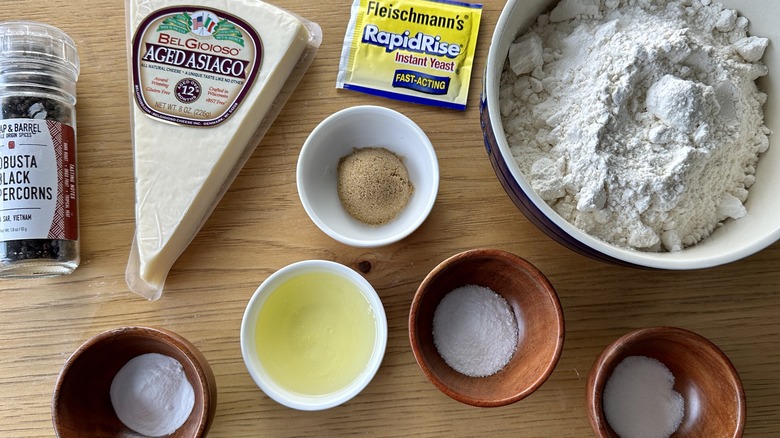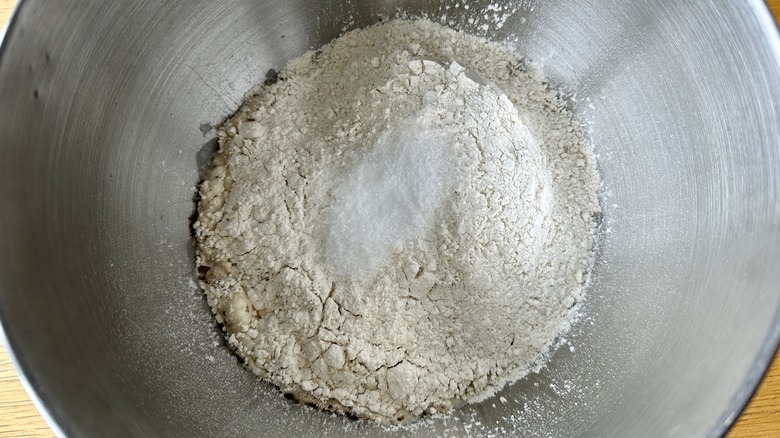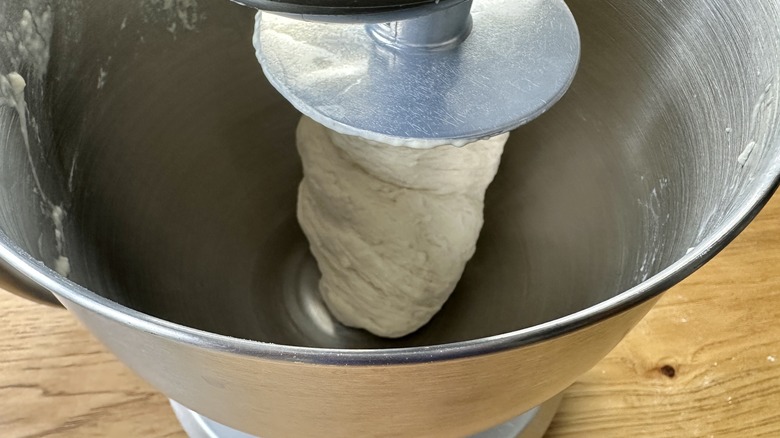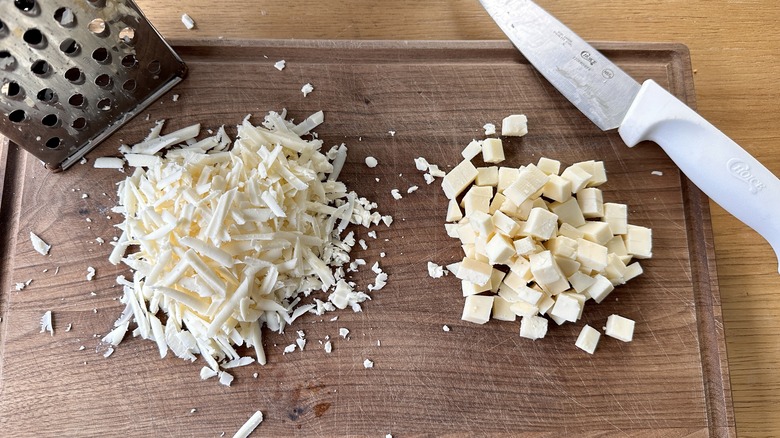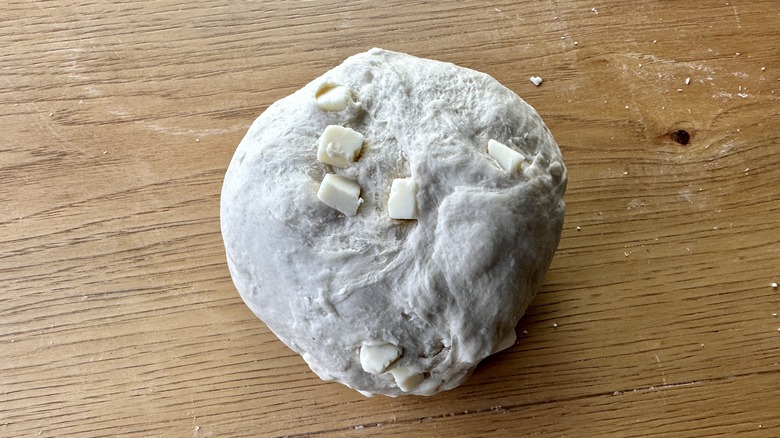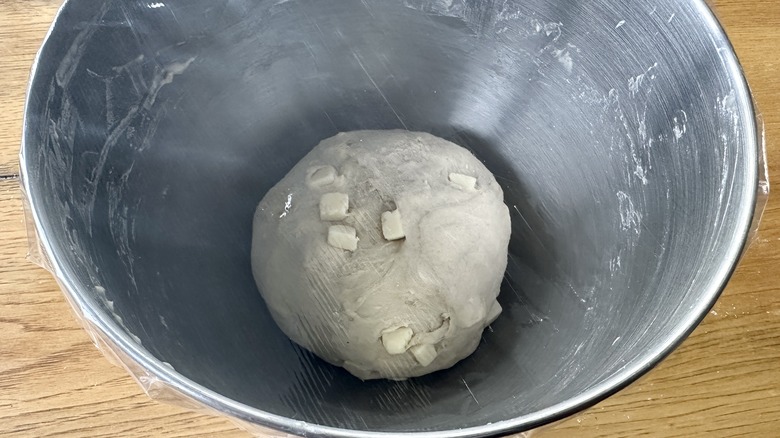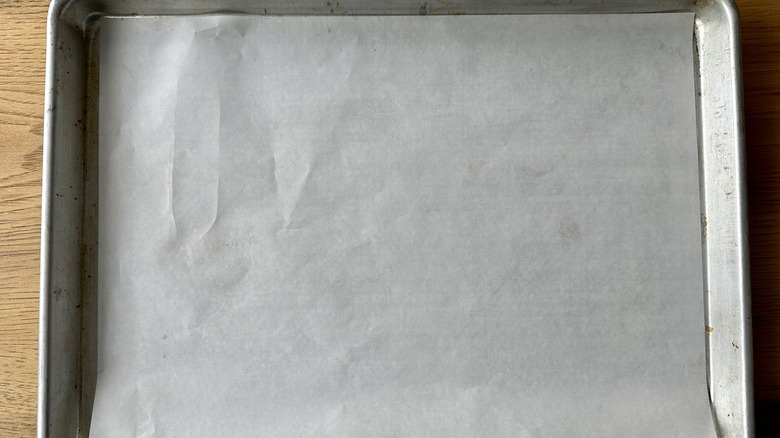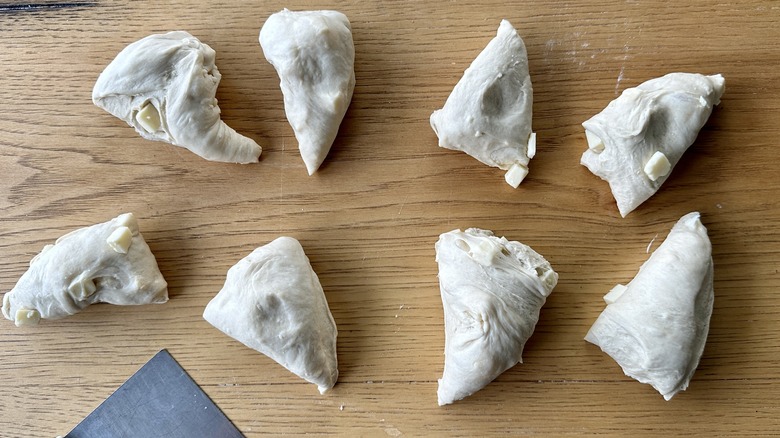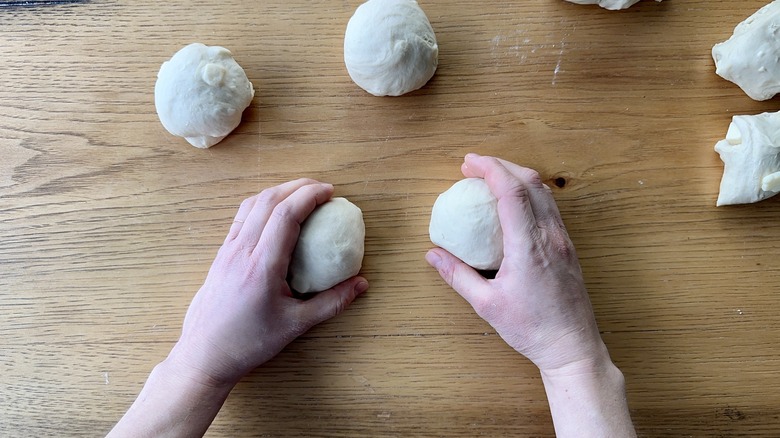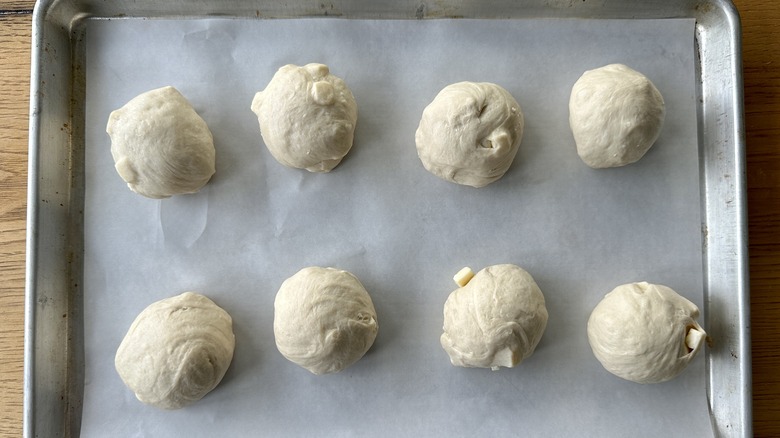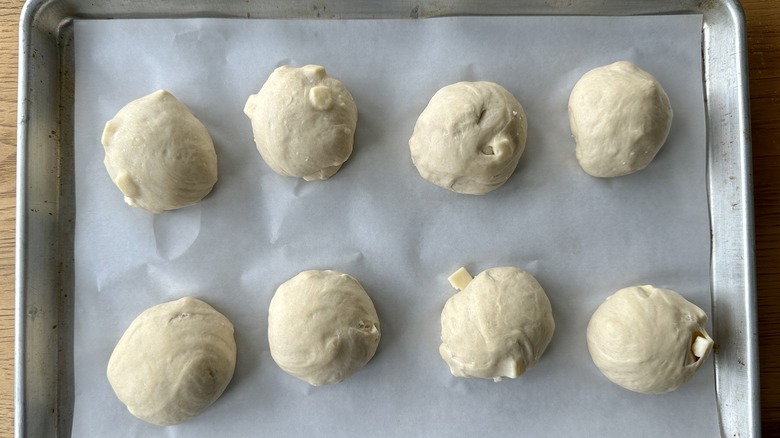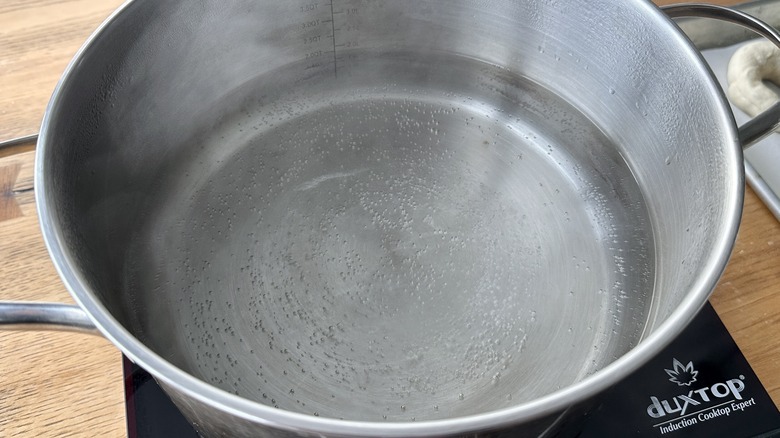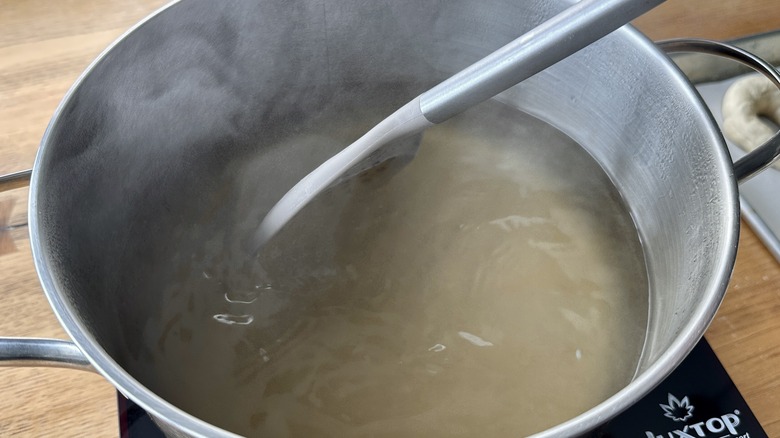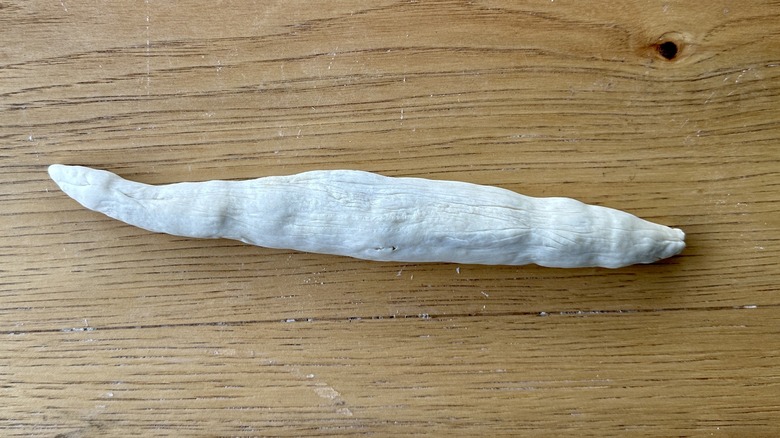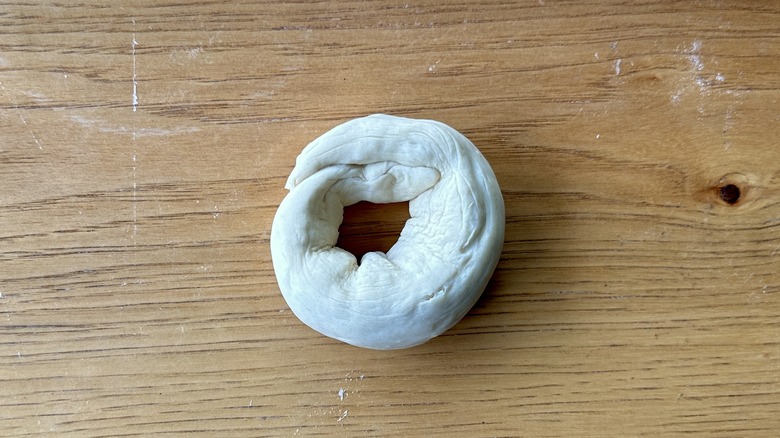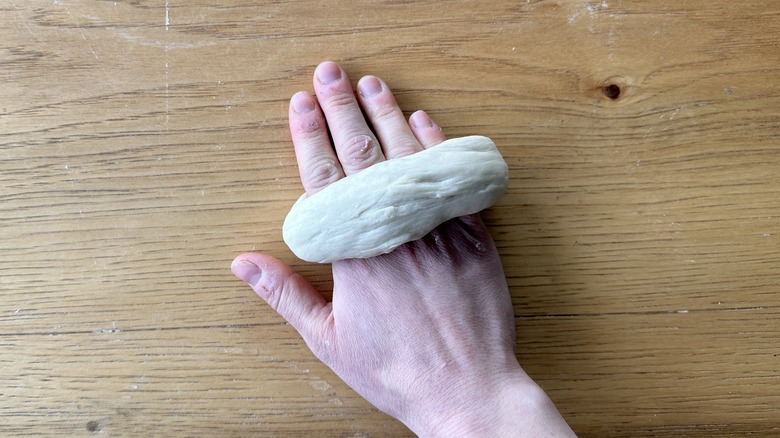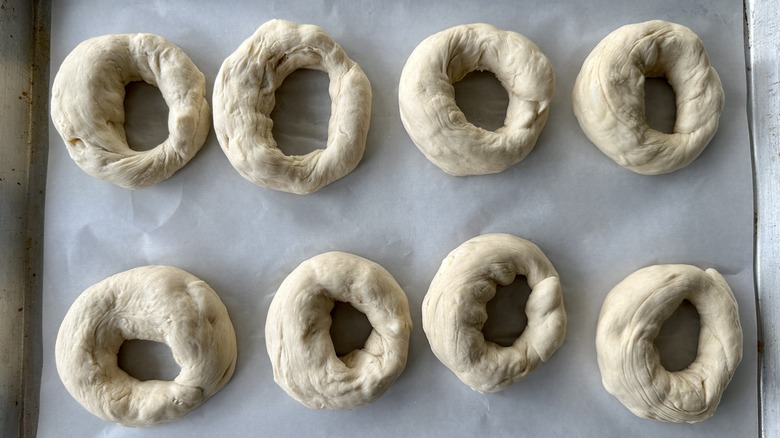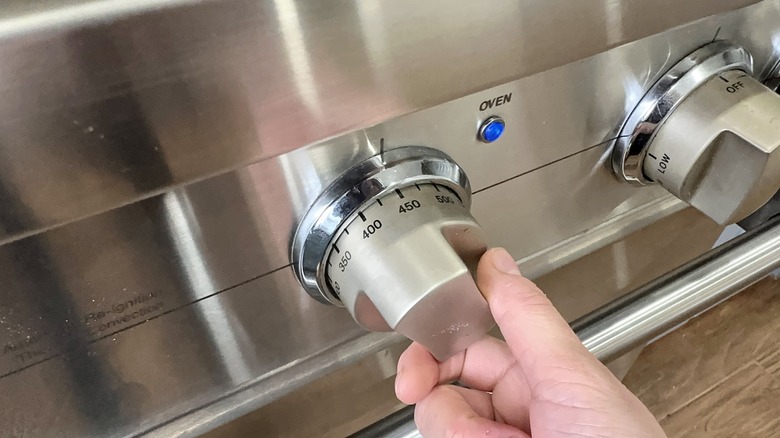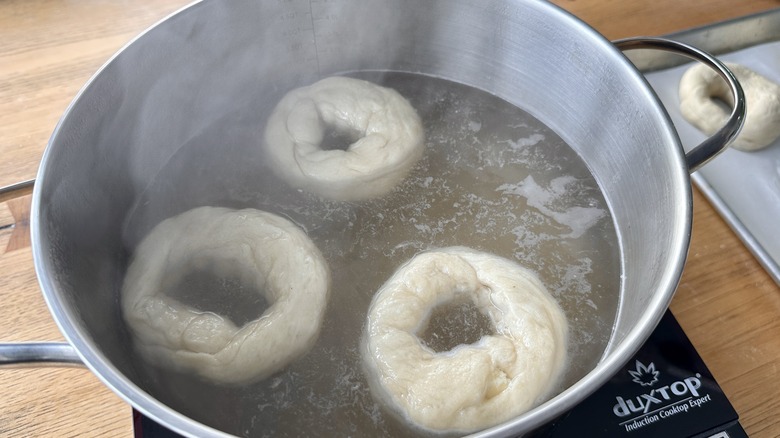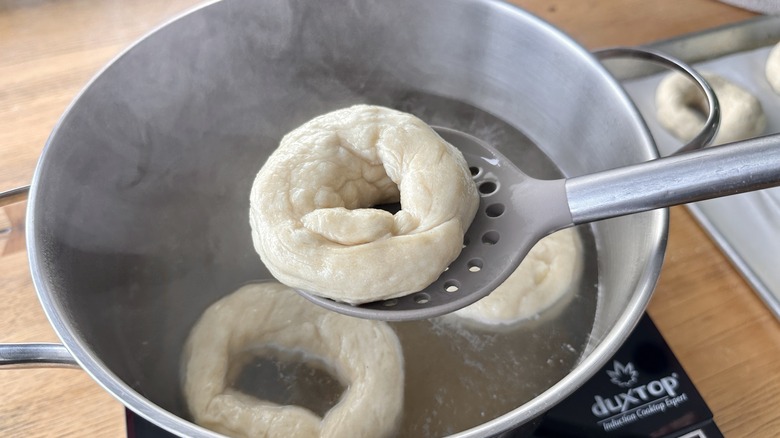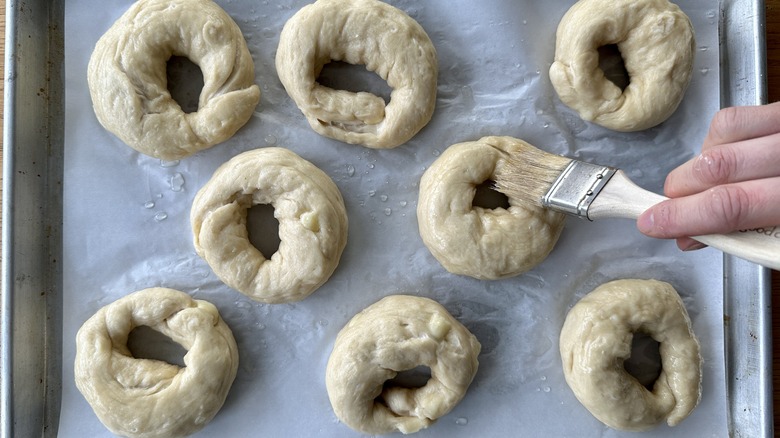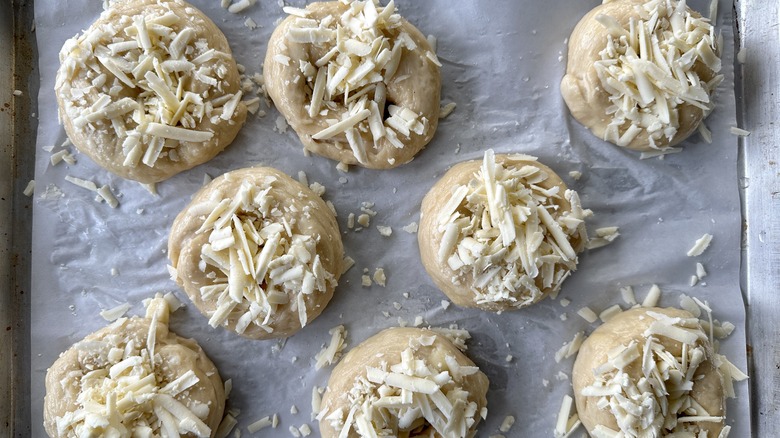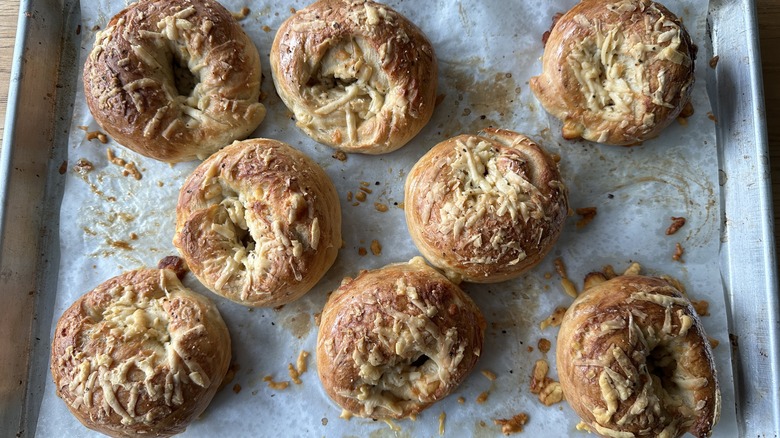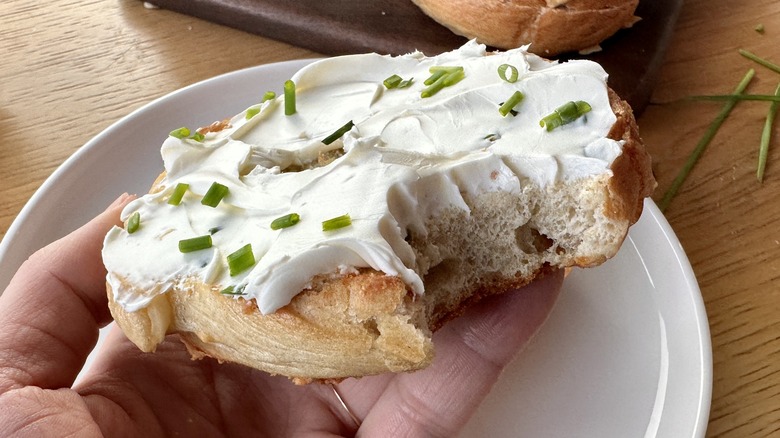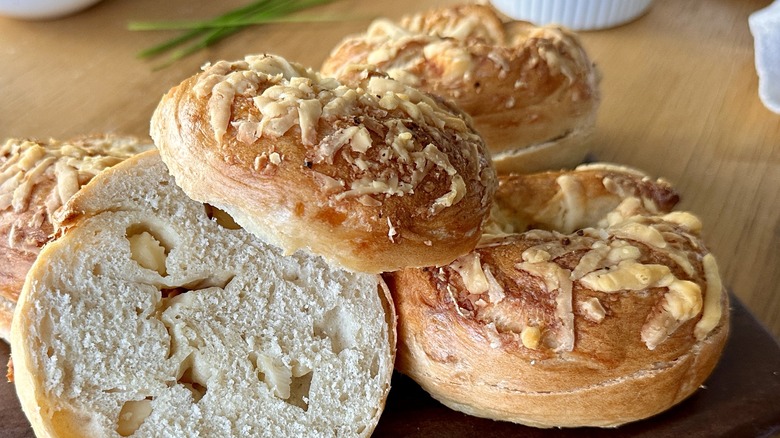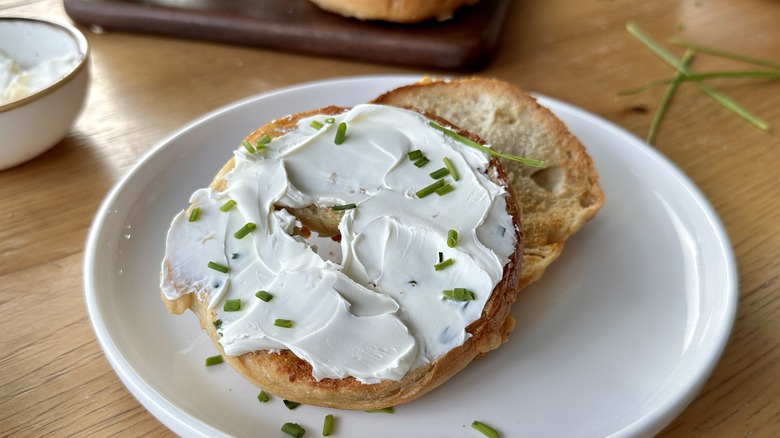Homemade Asiago Bagels Recipe
If you thought you'd never achieve the texture of store-bought bagels at home, think again — these homemade Asiago cheese bagels are about to flip that idea on its head. These bagels start with a short kneading process that's almost completely hands-off thanks to the help of a stand mixer with a hook attachment. If you don't have a hook attachment (or stand mixer) don't worry — you can easily knead this supple dough by hand, adding a few extra minutes to the kneading time to ensure a crusty result. The rest of the process is where you'll really start to have some fun. The dough will rise, then get shaped into rings, and those rings will be boiled in a baking soda bath. The baking soda bath, with a hint of brown sugar, will help the bagels brown and develop a chewy texture and crisp crust as they bake.
"These bagels rival the ones I've bought at some of my favorite bagel spots," recipe developer Katie Rosenhouse tells us. "Get the whole family involved in making them, and there's no doubt you'll be making these cheesy bagels on repeat." Though the process may seem a bit intimidating, the results are well worth the effort, and you may just realize that making homemade bagels isn't such a daunting task after all.
Gather the ingredients for homemade Asiago bagels
Just eight ingredients are needed to make these homemade Asiago bagels, starting with Instant yeast, which gives these bagels their rise. If you have active-dry yeast on hand, feel free to use it in place of the instant yeast in an equal quantity — just proof first in lukewarm water with a pinch of sugar to get it going. Sugar adds balance and flavor to the bagel dough, but can be substituted with honey or other preferred sweetener.
Bread flour has a high protein content that helps these bagels develop their crusty exteriors and chewy centers. "In certain bread recipes I like to give the option of swapping bread flour for all-purpose," Rosenhouse says, "but for bagels you really don't get the same results without bread flour."
Kosher salt enhances the flavor of the dough, while Asiago cheese is divided to be cubed and added to the dough itself, and grated for topping the bagels before baking. Egg white is brushed over the dough to help the cheese adhere and give the bagels a light sheen, but can be skipped if needed.
Rosenhouse says, "Giving the bagels a dip into a baking soda bath is probably the most fun part of making bagels at home. The baking soda helps give the bagels their crusty texture, and the brown sugar helps them brown evenly in the oven."
Step 1: Place ingredients into mixing bowl
In the bowl of a stand mixer fitted with a hook attachment, add the sugar, yeast, bread flour, salt, and 1 ⅓ cups lukewarm water.
Step 2: Knead until smooth
Knead on medium speed until dough is smooth and supple, about 8 to 10 minutes.
Step 3: Cube and grate cheese
In the meantime, cut half of the Asiago cheese into small cubes and grate the remaining half with the large holes of a box grater, then set aside.
Step 4: Knead cheese into dough
Transfer dough to a clean surface and knead in cubed cheese.
Step 5: Let dough rise
Place dough in a clean bowl and cover with plastic wrap. Set aside for 1 ½ to 2 hours until doubled in size.
Step 6: Prepare baking sheet
Line a standard baking sheet with parchment paper and coat with cooking spray. Set aside.
Step 7: Divide dough
Transfer dough to a clean surface and divide into 8 equal sections.
Step 8: Shape dough into rounds
Use your hands to roll each section into a smooth ball.
Step 9: Transfer to baking sheet
Place balls onto prepared baking sheet, spacing at least a few inches apart.
Step 10: Set aside to rise
Cover and set aside for 30 minutes until lightly puffed.
Step 11: Bring water to a simmer
In the meantime, bring a pot with at least 3 inches of water to a simmer.
Step 12: Add brown sugar and baking soda
Add brown sugar and baking soda and stir to combine. Reduce heat to low.
Step 13: Roll dough to tapered ropes
Roll each ball into a 10-inch-long rope tapered on both ends.
Step 14: Shape ropes into rings
Link the ends of each rope to create a ring.
Step 15: Seal rings
Place your hand inside the ring and roll against the table to seal the seam.
Step 16: Transfer rings to baking sheet
Transfer all rings back to the baking sheet.
Step 17: Preheat oven
Preheat oven to 450 F.
Step 18: Add bagels to baking soda bath
Add a few bagels at a time to the simmering liquid.
Step 19: Flip bagels
Cook on one side for 1 minute, then flip and cook for 30 seconds. Repeat with remaining bagels, transferring them back to the baking sheet after boiling.
Step 20: Brush with egg white
Brush the egg white over the bagels.
Step 21: Top with cheese
Sprinkle the bagels generously with grated cheese. Optionally sprinkle with black pepper.
Step 22: Bake until browned
Bake the bagels for 20 to 25 minutes on the center or bottom rack until they're a deep golden brown color.
Step 23: Serve
Serve warm, with cream cheese or as desired.
How can I switch up these homemade Asiago bagels?
Once you have the method of making these homemade Asiago bagels down, you can start to play with variations based on your preferences. For a flavorful kick, try adding some special additions into the dough after kneading. Diced jalapeños or a hint of cayenne pepper can add a nice touch of heat. Chopped sun-dried tomatoes will add color and a tangy flavor, while pesto swirled in can provide a burst of herbaceous flavor and color. Bacon bits are a natural pairing for the Asiago cheese, and chopped chives, basil, rosemary, or spinach can add a pop of color and freshness. Caramelized onions add sweetness, and freshly cracked black pepper can provide a hint of peppery spice.
Before baking, mix up the presentation of these bagels by topping the cheese with everything bagel seasoning, poppy seeds, dried onion flakes, sesame seeds, black pepper, flaky sea salt, or any other toppings as desired. Serve the bagels fresh or toasted with a drizzle of hot honey, cream cheese, butter, or jam for a sweet twist. They also make excellent breakfast sandwiches, grilled cheese, pizza bagels, and more.
What's the best way to store leftover Asiago bagels?
Depending on when you'd like to serve these bagels, they can be stored at room temperature or frozen. If storing at room temperature, transfer to a plastic bag or airtight container and store for up to two days for optimal freshness. Reheat in the toaster or oven until warmed before serving.
For longer storage, cut in half and transfer to a freezer-safe plastic bag or airtight container and remove excess air before sealing. You can freeze the bagels for up to two months, and when it comes time to serve, grab a bagel straight from the freezer, toast, and enjoy as desired.
If you'd like to prepare the bagels a day in advance but bake fresh before serving, knead the dough as directed before setting it aside for its first rise. After the dough has risen, transfer the covered bowl to the refrigerator and chill overnight. Bring to room temperature the next day and continue shaping and baking as directed.

- 1 ½ teaspoons granulated sugar
- 1 (2 ¼-ounce) packet instant yeast
- 3 ¾ cups bread flour
- 2 teaspoons kosher salt
- 8 ounces Asiago cheese, divided
- 1 tablespoon dark brown sugar
- 1 teaspoon baking soda
- 1 large egg white
- Freshly cracked black pepper
- In the bowl of a stand mixer fitted with a hook attachment, add the sugar, yeast, bread flour, salt, and 1 ⅓ cups lukewarm water.
- Knead on medium speed until dough is smooth and supple, about 8 to 10 minutes.
- In the meantime, cut half of the Asiago cheese into small cubes and grate the remaining half with the large holes of a box grater, then set aside.
- Transfer dough to a clean surface and knead in cubed cheese.
- Place dough in a clean bowl and cover with plastic wrap. Set aside for 1 ½ to 2 hours until doubled in size.
- Line a standard baking sheet with parchment paper and coat with cooking spray. Set aside.
- Transfer dough to a clean surface and divide into 8 equal sections.
- Use your hands to roll each section into a smooth ball.
- Place balls onto prepared baking sheet, spacing at least a few inches apart.
- Cover and set aside for 30 minutes until lightly puffed.
- In the meantime, bring a pot with at least 3 inches of water to a simmer.
- Add brown sugar and baking soda and stir to combine. Reduce heat to low.
- Roll each ball into a 10-inch-long rope tapered on both ends.
- Link the ends of each rope to create a ring.
- Place your hand inside the ring and roll against the table to seal the seam.
- Transfer all rings back to the baking sheet.
- Preheat oven to 450 F.
- Add a few bagels at a time to the simmering liquid.
- Cook on one side for 1 minute, then flip and cook for 30 seconds. Repeat with remaining bagels, transferring them back to the baking sheet after boiling.
- Brush the egg white over the bagels.
- Sprinkle the bagels generously with grated cheese. Optionally sprinkle with black pepper.
- Bake the bagels for 20 to 25 minutes on the center or bottom rack until they're a deep golden brown color.
- Serve warm, with cream cheese or as desired.
| Calories per Serving | 378 |
| Total Fat | 8.8 g |
| Saturated Fat | 4.4 g |
| Trans Fat | 0.0 |
| Cholesterol | 19.3 mg |
| Total Carbohydrates | 52.7 g |
| Dietary Fiber | 3.7 g |
| Total Sugars | 2.1 g |
| Sodium | 504.6 mg |
| Protein | 21.5 g |

